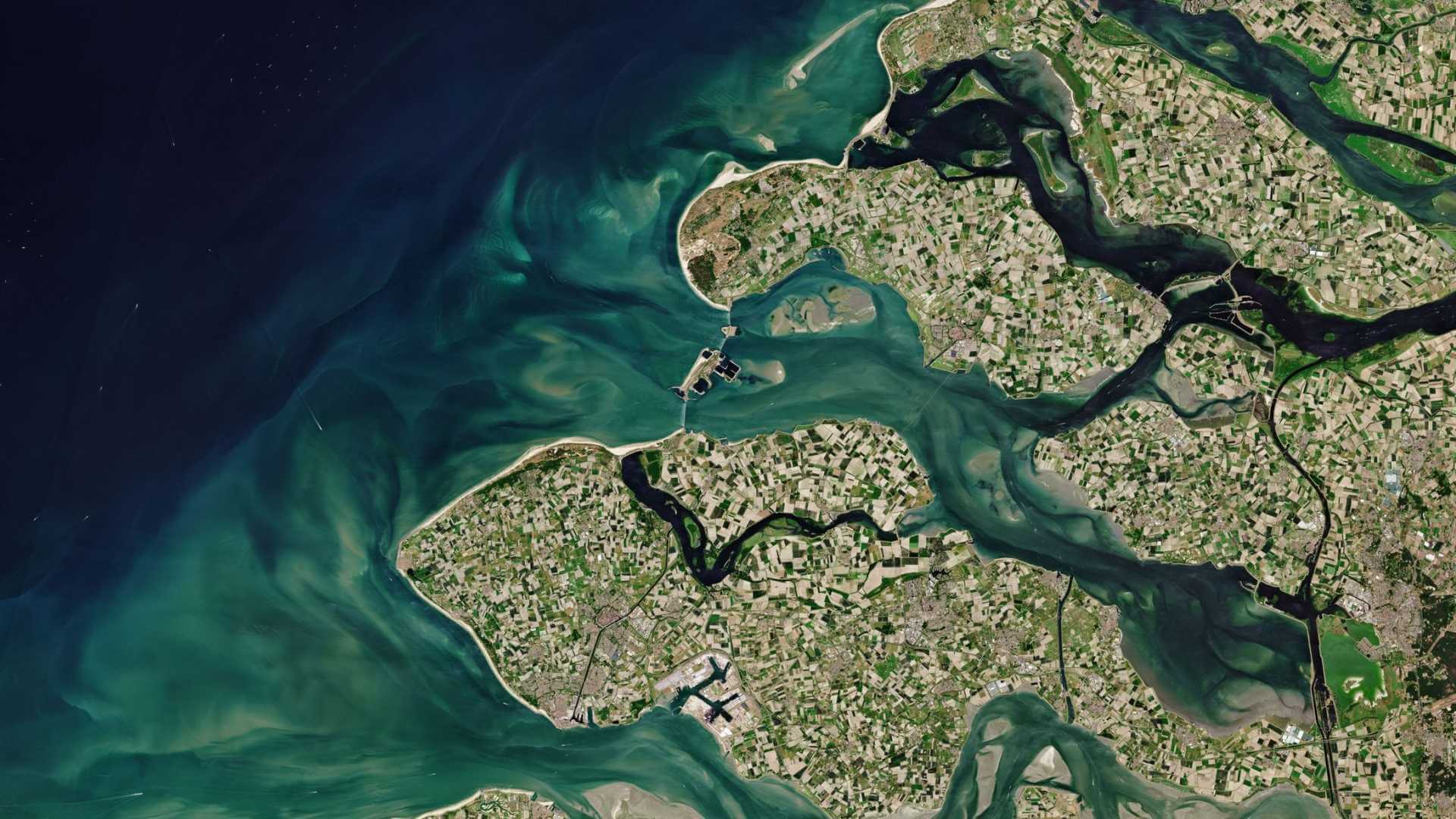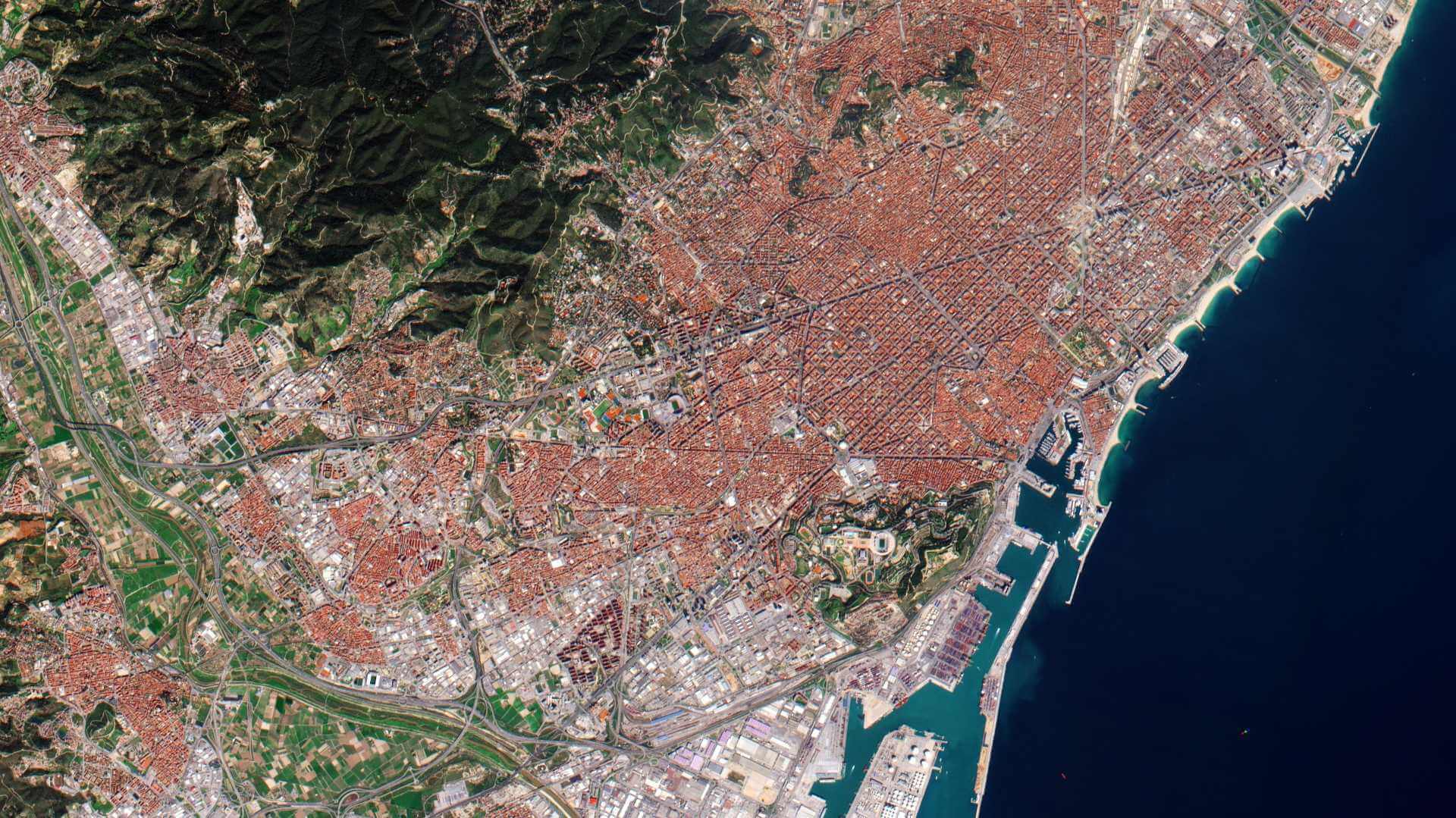Featured
About WorldView-3
WorldView-3 is an imaging and environment-monitoring satellite from Maxar of the United States which launched on 13 August 2014 and remains operational. It is very similar to WorldView-2 but positioned in a lower orbit.
| Orbit Altitude | 617 km |
| Orbit Type | Sun-synchronous |
| Orbit Period | 97 minutes |
| Revisit Time | 1 day at 1-metre GSD resolution 4.5 days at 20° off-nadir (0.59 m GSD) |
| Equator Crossing Time | 10:30am Descending node |
WorldView-3 Objectives
WorldView-3 was the first mission to carry a multi-payload, super-spectral, high-resolution commercial satellite sensor. WorldView-3 is capable of collecting up to 680,000 km2 per day.
WorldView-3 Instruments
WorldView-110 camera (WV110)
This instrument collects images at 0.31 metre panchromatic and 1.24 metre in the eight VNIR bands, 3.7m in the eight SWIR bands and a 30 m resolution in the CAVIS (Clouds, Aerosols, Vapours, Ice and Snow) bands.
WorldView-3 has bands for enhanced multispectral analysis (coastal blue, yellow, red edge, NIR2) designed to improve segmentation and classification of land and aquatic features.
| Spectral range | Band name | Spectral band | GSD (Ground Sample Distance) |
| Panchromatic Band (1) | 450 - 800 nm | Nadir: 0.31 m, 20º off-nadir: 0.34 m | |
| MS (Multispectral) Bands (8) in VNIR (Visible Near Infrared) | Coastal Blue | 400 - 450 nm | Nadir: 1.24 m 20º off-nadir: 1.38 m |
| Blue | 450 - 510 nm | ||
| Green | 510 - 580 nm | ||
| Yellow | 585 - 625 nm | ||
| Red | 630 - 690 nm | ||
| Red edge | 705 - 745 nm | ||
| Near-IR1 | 770 - 895 nm | ||
| Near-IR2 | 860 - 1040 nm | ||
| Multiband (8 bands) in SWIR (Shortwave Infrared) spectral range | SWIR-1 | 1195 - 1225 nm | Nadir: 3.70 m 20º off-nadir: 4.10 m |
| SWIR-2 | 1550 - 1590 nm | ||
| SWIR-3 | 1640 - 1680 nm | ||
| SWIR-4 | 1710 - 1750 nm | ||
| SWIR-5 | 2145 - 2185 nm | ||
| SWIR-6 | 2185 - 2225 nm | ||
| SWIR-7 | 2235 - 2285 nm | ||
| SWIR-8 | 2295 - 2365 nm | ||
| CAVIS bands (12) CAVIS (Clouds, Aerosols, Vapors, Ice, & Snow) | Desert clouds | 405 - 420 nm | Nadir: 30 m |
| Aerosols-1 | 459 - 509 nm | ||
| Green | 525 - 585 nm | ||
| Aerosols-2 | 620 - 670 nm | ||
| Water-1 | 845 - 885 nm | ||
| Water-2 | 897 - 927 nm | ||
| Water-3 | 930 - 965 nm | ||
| NDVI-SWIR | 1220 - 1252 nm | ||
| Cirrus | 1350 - 1410 nm | ||
| Snow | 1620 - 1680 nm | ||
| Aerosol-3 | 2105 - 2245 nm | ||
| Aerosol-3 | 2105 - 2245 nm | ||
| Data quantization | 11 bit/pixel Pan and MS; 14 bit/pixel SWIR | ||
| Swath width | 13.1 km | ||
| Revisit frequency (at 40º N latitude) | 1 m GSD: < 1.0 day 4.5 days at 20° off-nadir or less | ||
| Geolocation accuracy | < 3.0 m CE90 (Circular Error of 90%) | ||
Non-scientific measuring instruments
CAVIS (Clouds, Aerosols, Vapours, Ice, and Snow): The objective of CAVIS is to monitor the atmosphere and provide correction data to improve WorldView-3's high-resolution imagery when it images Earth objects through haze, soot, dust or other obscurants.
WorldView-3 Data
DATA COLLECTIONS
These collections are available as part of the Maxar Standard Satellite Imagery products and are distributed by European Space Imaging (EUSI).
ESA will support as many high-quality and innovative projects as possible within the quota limit available, therefore only a limited amount of products can be made available to each project.
Moreover, ESA offers to registered users access through the Online Dissemination server to the following data collection:

